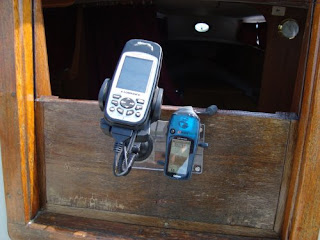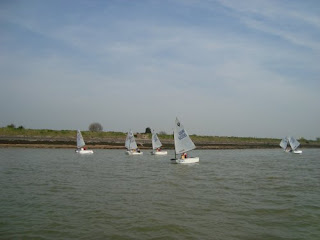 The repaired NASA Target 2 Depth Sounder
The repaired NASA Target 2 Depth SounderFollowing my previous posting about my faulty NASA Target 2 Depth Sounder, I’m pleased to say NASA Marine carried out the repair and returned the unit to me on Thursday, 29th April, which was very good, because they did the repair right away. I have yet to reinstall the Sounder and test it, but the paperwork from NASA confirms that a faulty capacitor was replaced and that the Sounder was fully tested before being despatched.
 Lead-Line (Courtesy of the Maritime Museum - see link below)
Lead-Line (Courtesy of the Maritime Museum - see link below)When I first started coastal sailing I relied upon an old-fashioned lead - line. Mine used to reach a depth of 7 fathoms and was marked traditionally with 2 strips of leather for 2 fathoms, 3 strips for 3 fathoms, a piece of white cloth for 5 fathoms and a piece of red cloth for 7 fathoms. Soundings by a lead-line can go as deep as 20 fathoms (120 feet). At 10 fathoms there’s a piece of leather with a hole in it; at 13 fathoms there’s a piece of blue cloth, 15 fathoms is marked with white cloth, 17 fathoms with red cloth, and at 20 fathoms there’s as piece of string with two knots. All of these markers can be identified by touch, so that the lead-line can be used at night. At the base of the cylindrical lead sinker there’s a cavity for inserting tallow which can be used to sample the nature of the sea bed. Gravel, pebbles, sand or mud adhere to the sticky tallow. The physical aspect of the sea bed can be an aid to identifying where the vessel is – that’s if the navigator’s chart is marked with the appropriate symbols. The old-fashioned Admiralty charts were very good in this respect. More modern metric charts have less information about the nature of the sea bed.
I’m a convert to digital depth sounders because a far better understanding of the form of the sea bed can be obtained through their use than by a simple lead-line, and electronic sounders have the advantage of providing multiple instantaneous readings. On the other hand, a lead-line gives an absolute depth without the possibility of error, because the leadsman has a physical connection between him and the sea bed. He can actually feel when the lead is stuck in mud, or when it strikes rock, or when it comes up cleanly from a sandy bottom. More advanced electronic depth sounders can take readings of the contour of the ground forward of where the ship is heading; therefore they can warn of shallow water ahead by activating an audible alarm. Even simple, inexpensive electronic sounders such as my NASA Target 2 may have a facility for presetting depth warnings, both for shallow and deep water.
Links
The Hand Lead-Line
http://www.rootsweb.ancestry.com/~mosmd/handline.htm
National Maritime Museum Lead-Line
http://www.nmm.ac.uk/collections/displayRepro.cfm?reproID=F7469&picture=1#content
NASA Marine
http://www.nasamarine.com/
Important Priority (Previous Blog about the Sounder)
http://bills-log.blogspot.com/2010/04/important-priority.html
















































